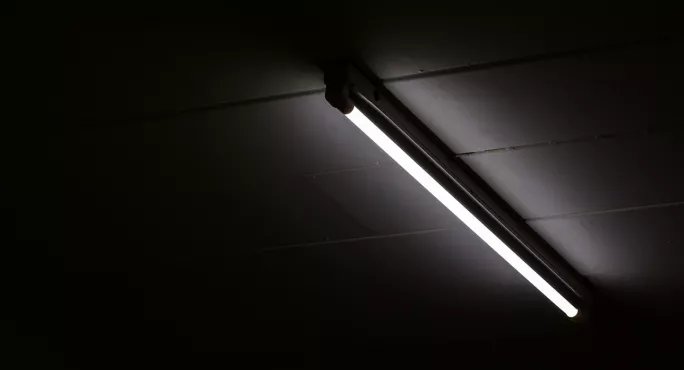Older fluorescent lighting fixtures in schools can lead to teachers and pupils developing migraines and eyestrain, an academic has warned.
And teachers’ unions have said this is “part of a pattern” of disrepair in the school working environment.
In a blog for website The Conversation, Arnold J Wilkins, professor of psychology at the University of Essex, wrote that while modern fluorescent lighting does not flicker, old-fashioned fluorescent lighting - found in 80 per cent of UK classrooms in a 2009 survey - can cause headaches and eyestrain.
Related: Bright lights dull pupils
School infrastructure: ‘Crumbling schools aren’t the exception’
Opinion: ‘In the age of edtech, why can’t we have decent classroom heating?’
Mary Bousted, joint general secretary of the NEU teaching union, said the harmful lighting was just one aspect of school infrastructure that needed to be replaced.
“There are many, many things in schools that need replacing,” she said.
“This is part of the extensive degradation of the working environment. It’s yet another sign of dilapidation in school buildings.
”£6.7 billion is needed to bring schools up to satisfactory conditions. I am sure that no one in private companies and offices would be expected to work under these lights.”
Older types of fluorescent lighting produce flashes that are imperceptible to the human eye. However, the flickers can still interfere with eyesight and reading.
“This rapid fluctuation of light from fluorescent lamps is known to affect the way our eyes move across text and it interferes with the performance of visual tasks,” Professor Wilkins writes.
This can affect pupils’ ability to read - meaning they need to use a coloured overlay - and has also been linked to migraines or headaches.
Professor Wilkins advises schools to replace older fluorescent lights for the benefit of pupils and teachers, and said this could also help children who struggled with reading.
“Clearly, then, it would be preferable for schools and workplaces to replace the old-fashioned fluorescent lighting with newer electronic circuitry that removes the 100-per-second variation,” he wrote.
“This would not only be healthier for children and teachers but also reduce the running costs. This is particularly important given that one in five children in England cannot read well by the age of 11 - and, for at least some of these children, fluorescent lighting could be part of the problem.”
Geoff Barton, Association of School and College Leaders general secretary, said: “We would guess that a lot of old-style fluorescent lighting which flickers in the way described has been replaced as a matter of course over the past 10 years in refurbishments and routine maintenance.
“But given the massive backlog of school repairs caused by funding constraints, it would not be surprising if this type of lighting was still in use in a proportion of schools.
“The National Audit Office in 2017 reported that it would cost £6.7 billion to return all school buildings to satisfactory or better condition. For many schools, it will be a question of where to prioritise scarce funding first.”




